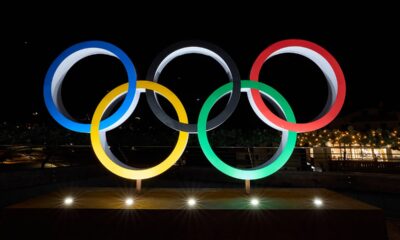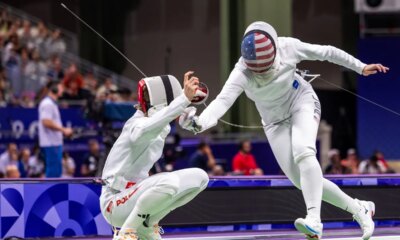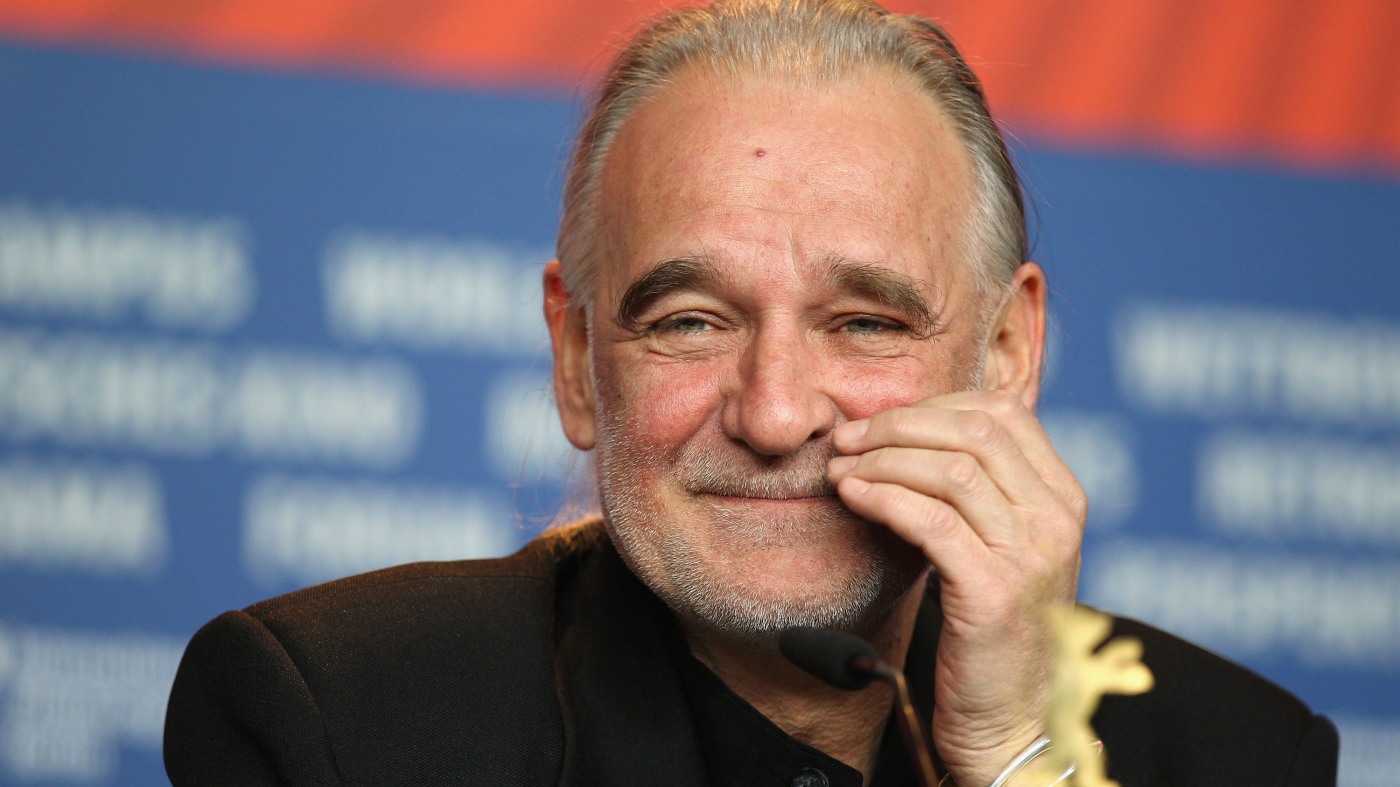Culture
Lydia Jacoby, after surprise Tokyo Olympic gold, misses out on Paris

INDIANAPOLIS — Lydia Jacoby looked up, stunned. Only 27 hundredths of a second separated her from Emma Weber’s second-place finish in the women’s 100-meter breaststroke final, but the two might as well have been two continents apart.
Veteran swimmers often describe U.S. Olympic trials as the hardest swim meet in the world — tougher than the Olympics themselves. In some events, the third-fastest American might be the third-best swimmer in the world. But only the top two make Team USA.
That razor-thin margin sets up the greatest of stakes; it’s make-or-break, all-or-nothing.
And Jacoby ended up with nothing, just three years removed from shocking herself and the world by winning gold in Tokyo in the same event. On Tuesday morning, she announced that she’d scratched the 200-meter breaststroke, which meant her meet was over. The 20-year-old won’t be going to Paris.
“I feel weirdly fine,” Jacoby said Tuesday. “I think it hasn’t quite hit me yet. I definitely had a little cry last night, but I’ve been doing pretty well today. I’m sure there’ll be a lot of time to process emotions in the next couple of weeks and I’ll … try to line up some fun things to look forward to this summer.”
Two-time gold medalist Lilly King, who took gold in the event in Rio de Janeiro, touched first Monday night in 1:05.43. Weber’s second-place finish was a shocker, one of the true upsets of the meet thus far. After King congratulated Weber, she swam over to hug Jacoby.
“My heart absolutely breaks for her,” King said. “But on the flip side, what a performance from Emma Weber — and that’s just kind of how this meet rolls. It will make your career and break your career in a minute. It’s the hardest meet in the world. It’s a lot harder than the Olympics, in my opinion.
“I hope she can move forward from this, and I’m rooting for her always.”
In recent months, Jacoby has opened up about the severe depression she experienced after winning that gold medal in Tokyo. She felt like everyone wanted a piece of her, and she couldn’t say no. She couldn’t tell which people around her genuinely cared about her well-being and which just wanted to be associated with a gold medalist. There were days and weeks she didn’t want to get out of bed back home in Alaska.
“I was feeling like my identity was locked up in sports,” Jacoby said Tuesday. “The biggest thing for me lately is (remembering) that being a swimmer is something I do. It’s not something I am. I have so many interests and passions. I have amazing friends and family outside of the sport. Remembering those things is a big thing for me.
“A lot of people outside of sports see this and think this is everything. It’s important that people realize, yes, this is something I do, and I’m very invested in it. Obviously, I put a lot of emotion into this, and it is pretty devastating. But at the end of the road, it’s not going to change my life.”
Lydia Jacoby and Lilly King embrace after the 100-meter breaststroke final at the U.S. Olympic trials. Jacoby, the Tokyo gold medalist, did not qualify for Paris. (Maddie Meyer / Getty Images)
Jacoby said she seriously considered quitting swimming after Tokyo and even debated whether she wanted to swim at trials at times during the past year. She’s glad she stuck with the sport and swam here, despite the disappointing result.
Jacoby said she was frustrated with her performance here at Lucas Oil Stadium. Her time of 1:06.37 was more than a full second slower than her Olympic qualifying time at trials in 2021. She’d been training well, and she’s disappointed that her output Monday didn’t match what she’d been putting into the event. Jacoby said she had focused all of her training on the 100-meter breaststroke and was planning to scratch the 200 regardless.
“I don’t feel like I put up a swim that was a good representation of what I can do, which is the most frustrating part to me,” Jacoby said.
She said she plans to take a break from swimming to “get in a better place with where I am in my life outside of swimming and then reapproach the sport in a healthy way for myself.” She doesn’t think she’s done with the sport entirely, nor does she think the sport is done with her.
But that’s in the long term. Right now, Jacoby isn’t sure if she’ll watch the event on television next month. She’s not sure she can bear it, sitting at home on the wrong continent while her friends and former teammates wear red, white and blue.
“I feel like I haven’t really processed the fact that I won’t be swimming there,” Jacoby said. “I’m honestly not really sure if I want to watch my event. It’s something I haven’t really put a lot of thought into. But the people that are making the team — like, I’ve been crying like the past week, tears of joy for all my friends making the team … so, I am absolutely looking forward to seeing everybody do amazing things in Paris.
“My not being there is definitely going to be tough, but I wish them all the absolute best.”
GO DEEPER
Regan Smith reclaims WR in women’s 100m backstroke at Olympic trials
(Top photo: Maddie Meyer / Getty Images)

Culture
Do You Know the Notable Buildings Mentioned in These Books?

A strong sense of place can deeply influence a story, and in some cases, the setting can even feel like a character itself. This week’s literary geography quiz highlights buildings that inspired authors, often to the point of including the structures in their novels. (Many of the buildings are still open to visitors.) To play, just make your selection in the multiple-choice list and the correct answer will be revealed. At the end of the quiz, you’ll find links to the books if you’d like to do further reading.
Culture
Video: 250 Years of Jane Austen, in Objects

new video loaded: 250 Years of Jane Austen, in Objects
By Jennifer Harlan, Sadie Stein, Claire Hogan, Laura Salaberry and Edward Vega
December 18, 2025
Culture
Try This Quiz and See How Much You Know About Jane Austen

“Window seat with garden view / A perfect nook to read a book / I’m lost in my Jane Austen…” sings Kristin Chenoweth in “The Girl in 14G” — what could be more ideal? Well, perhaps showing off your literary knowledge and getting a perfect score on this week’s super-size Book Review Quiz Bowl honoring the life, work and global influence of Jane Austen, who turns 250 today. In the 12 questions below, tap or click your answers to the questions. And no matter how you do, scroll on to the end, where you’ll find links to free e-book versions of her novels — and more.
-

 World1 week ago
World1 week agoHamas builds new terror regime in Gaza, recruiting teens amid problematic election
-

 News1 week ago
News1 week agoFor those who help the poor, 2025 goes down as a year of chaos
-

 Business1 week ago
Business1 week agoInstacart ends AI pricing test that charged shoppers different prices for the same items
-

 Health1 week ago
Health1 week agoDid holiday stress wreak havoc on your gut? Doctors say 6 simple tips can help
-

 Technology1 week ago
Technology1 week agoChatGPT’s GPT-5.2 is here, and it feels rushed
-

 Business1 week ago
Business1 week agoA tale of two Ralphs — Lauren and the supermarket — shows the reality of a K-shaped economy
-

 Science1 week ago
Science1 week agoWe Asked for Environmental Fixes in Your State. You Sent In Thousands.
-

 Politics1 week ago
Politics1 week agoThe biggest losers of 2025: Who fell flat as the year closed
























